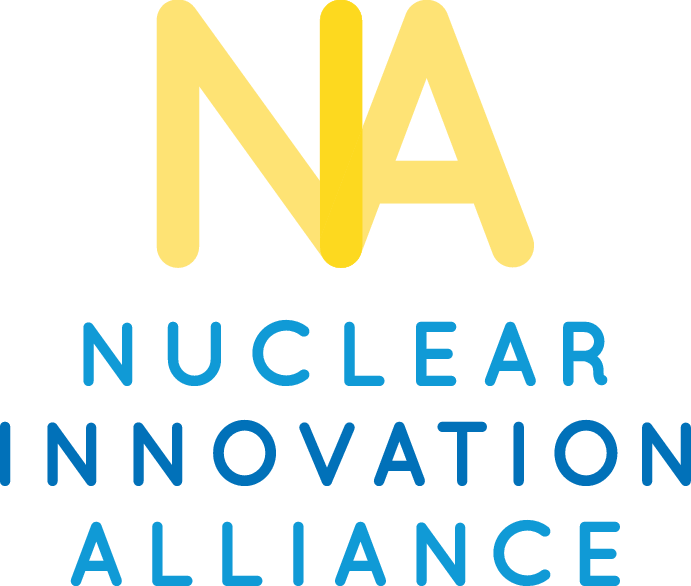
WASHINGTON, D.C. The Energy Act of 2020, passed in December 2020 as part of the Omnibus, is the most sweeping piece of energy legislation enacted in more than a decade. Built on years of work by Congressional leaders, staff, and stakeholders, the Act combines multiple bills across the energy sector. For advanced nuclear energy, it is based on two previously introduced bills: the Nuclear Energy Research and Development Act (NERDA) and the Nuclear Energy Leadership Act (NELA).
The Act includes several provisions on nuclear energy; the two primary ones related to advanced reactors are:
-
Section 2001. Advanced Nuclear Fuel Availability. Many advanced designs utilize high-assay low-enriched uranium (HA-LEU) for operational, economic, efficiency and other advantages. This section requires the U.S. Department of Energy (DOE) to support the availability of HA-LEU for demonstration and commercial projects. It also directs the Nuclear Regulatory Commission (NRC) to identify requirements for HA-LEU in preparation for future regulatory development.
-
Section 2003. Nuclear energy research, development, demonstration, and commercial application programs. By reauthorizing DOE’s RDD&C activities for advanced reactors, fuels, and other advanced concepts, this section provides for continued government basic and applied research. It also authorizes funding for the Advanced Reactor Demonstration Program (ARDP) and the Versatile Test Reactor (VTR). Finally, this section authorizes a nuclear integrated energy systems program, directing DOE to carry out RDD&C activities related to using nuclear for desalination, hydro, industrial heat, or other non-conventional purposes.
Major nuclear authorization amounts are highlighted below:
| Program | FY21 | FY22 | FY23 | FY24 | FY25 |
|---|---|---|---|---|---|
| Section 2001. Advanced Nuclear Fuel Availiability (including HA-LEU) | $31.5 million | $33.1 million | $34.8 million | $36.5 million | $38.3 million |
| Section 2003 (a) Reactor Concepts RDD&C | $55 million | $55 million | $55 million | $55 million | $55 million |
| Section 2003 (c) Nuclear Integrated Energy Systems RDD&C | $20 million | $30 million | $30 million | $40 million | $40 million |
| Section 2003 (f) Versatile Test Reactor | $295 million | $348 million | $525 million | $534 million | $584 million |
| Section 2003 (g) Advanced Reactor Demonstration Program | $405 million | $405 million | $420 million | $455 million | $455 million |
Beyond nuclear-specific sections, many other provisions of the Energy Act of 2020 will support the development, demonstration, and commercialization of low-carbon technologies, including advanced nuclear energy. Section 8003 establishes a cross-office RD&D program for integrated energy systems that can include nuclear power. Section 9005 provides DOE authority to make public-private demonstration projects like the Advanced Reactor Demonstration Program (ARDP) milestone-based, consistent with NIA’s recommendations. Other provisions establish programs to reduce industrial emissions, develop hydrogen, and reform DOE’s loan program.
The Energy Act of 2020 builds on recent bipartisan success in enacting transformative advanced nuclear legislation. The Nuclear Energy Innovation Capabilities Act (NEICA), signed into law in September 2018, improved DOE’s research and development capabilities to assist the emerging advanced nuclear industry. Among other things, NEICA started the process to construct the VTR and established the National Reactor Innovation Center.
In December 2018, Congress passed the Nuclear Energy Innovation and Modernization Act (NEIMA), which included reforms and modernization requirements to enhance the NRC’s capabilities to review advanced designs. NRC is now developing a new performance-based, risk-informed licensing framework for advanced reactors, called Part 53.
Looking forward, these three pieces of bipartisan legislation provide a foundation for the new administration to use advanced nuclear energy to deliver on President Biden’s campaign promises to aggressively combat climate change. With the new Congress expected to continue bipartisan support for advanced nuclear energy, policymakers and stakeholders continue to focus on remaining legislative needs and opportunities. In particular, success of these authorized programs, including demonstration opportunities such as the ARDP and the UAMPS small modular reactor project, and research and testing facilities such as the VTR, depends on adequate yearly appropriations.
Also, a bill introduced late last year called the American Nuclear Infrastructure Act of 2020 (ANIA) proposes to further American leadership in advanced nuclear technologies.
Specifically, ANIA would:
-
Bolster U.S. international competitiveness and global leadership by directing the NRC to continue and strengthen international regulatory cooperation and assistance.
-
Create licensing prizes to reimburse NRC regulatory fees for the first advanced reactor licenses issued to private entities.
-
Require a report from NRC on licensing considerations for nonelectric applications of nuclear energy including hydrogen production, water desalination, industrial heat, energy storage, and medical isotope production.
-
Allow companies from U.S.-allied countries to invest in domestic nuclear facilities, in line with recent NIA recommendations.
-
Direct the NRC and DOE to work together to ensure sufficient federal technical expertise to support the development and evaluation of HA-LEU.
Additional legislative measures and robust funding for existing programs will each help to drive the eventual commercialization of advanced reactors in the U.S. This will play an essential role in promoting domestic enterprises and jobs as well as international U.S. leadership, and will define the United States’ ability to address climate change in the coming decades. The NIA applauds the new Administration’s and 117th Congress’ commitment to addressing climate change and looks forward to working with them to build on recent progress.